Czocha Castle - map, access, price list, sightseeing, history, hotel, accommodation
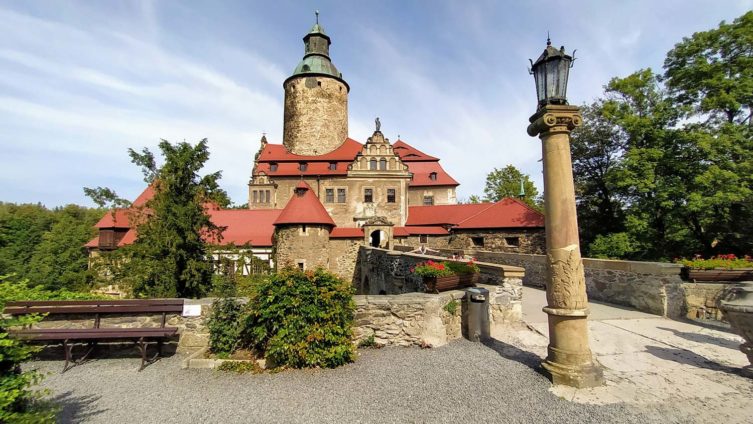
Let's start at the end
The story of Czocha Castle is the most interesting when you start telling it from the end, namely from the end of January 1945. It was then clear that Germany was losing the war. The front, and with it the Soviet troops, was inevitably approaching. In the area of Pogórze and Izerskie Mountains, whole waves of German people, escaping from Wrocław and the surrounding area, were arriving. Pursuant to German orders, civilians (under the threat of capital punishment) were required to evacuate from areas occupied by the Soviet army, destroying previously abandoned property and infrastructure.
Under these circumstances, the owner of the castle Ernst Gütschow decided to leave it and evacuate towards the western part of Germany. But he wasn't going to destroy anything. On the contrary!
Before leaving, he wanted to say goodbye to the castle servants. He gathered everyone in the knight's hall and it was then that he was about to utter the words that (in their pronunciation shocking at first glance) shaped the interest in the castle for the next several dozen (or more) years:
"Give them everything they want to take, and they will still take only a fraction of the treasures of the Czocha castle"
Baron Ernst Gütschow
To understand the meaning and importance of the above words, one needs to get to know Baron Ernst Gütschow a little better. A mysterious, strange and interesting man at the same time.
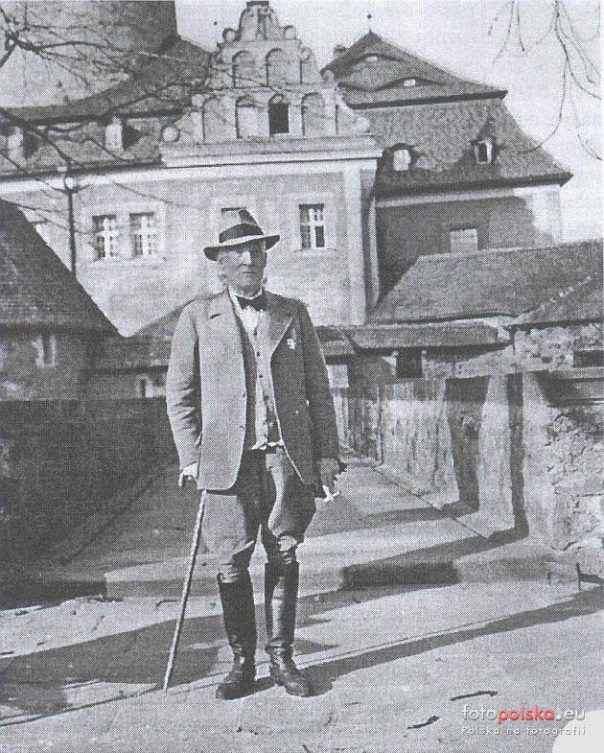
source: www.fotopolska.eu
Ernst Gütschow bought Czocha Castle in 1909. He paid for it a huge amount for those times 1,5 million marks. He had the necessary funds, as he was a thriving entrepreneur, general director of the Dresden tobacco plant Georg Antona Dresdner Zigarettenfabrik Jasmatzi. He flooded not only Germany with his products, but also much more distant markets, incl. Russia. So money was not a problem (by the way, Ernst Gütschow also bought the title of baron).
The technical condition of the castle required a thorough renovation. It is easy to guess that when choosing an architect for this task, Gütschow reached the top shelf. The costs were of secondary importance. The choice fell on Bodo Ebhardt: a secret court construction adviser, a close friend of the Emperor, who holds the honorary title of Architect of the Emperor of Germany and King of Prussia, Wilhelm II.
The works started very quickly and others were consumed 4 (!!!) million marks and lasted until 1920. The engraving from 1703 showing the castle became the basis for the reconstruction of the outer part. Bodo Ebhardt, with almost unlimited resources, conducted the work with great momentum. When planning a major reconstruction, he first built a wooden model in natural sizes, placed it in the planned place, and then assessed the legitimacy of the planned reconstruction. This is how, among others, entrance gate to the lower courtyard of the castle.
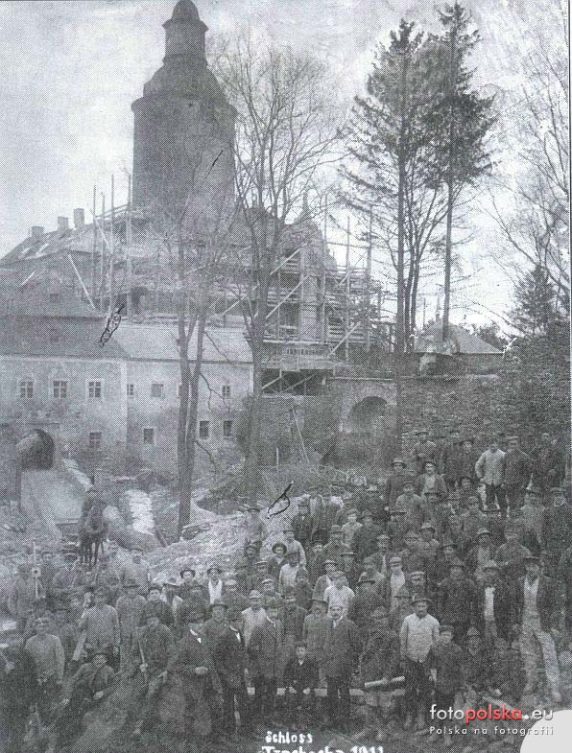
However, the key to the history of the castle is the extensive reconstruction of the interior of the castle carried out during the renovation. Changing the communication system, rebuilding the old and building new corridors, secret passages, lockers, hidden interiors, vaults, safes, niches ... Not all corridors led somewhere. There were dead ends or even trap corridors from which it was impossible to get out.
Specialist works were performed by miners who jointly constructed over 5 m000 of underground storeys and deep cellars. A guard system consisting of 2 checkpoints was created.
When analyzing the scope and nature of the work, the question naturally arises: what was it all meant to do? What was Ernst Gütschow's plan to buy and turn Czocha's castle into a real secret maze? Because there is no doubt that he had such a plan long before the purchase of the castle.
The answer seems very simple. Gütschow, apart from being an entrepreneur, was also an art collector. Not some trinket collector, but a collector of works that he systematically purchased, consistently building one of the most interesting private art collections at that time.
He had a special weakness for culture, art and even Russian cuisine. He learned Russian himself, and caviar started the castle menu. It is not known where Gütschow's interest in Russia came from. Perhaps it was the result of tobacco deals with Russia, or ... a Russian woman 24 years younger Elsa Krueger, known as the "tango queen" who fled from Russia to Berlin during the Great October Revolution. She founded a small theater in Berlin and Gütschow played a key role in financing her. He also hired her as a model for commercials for his tobacco empire.
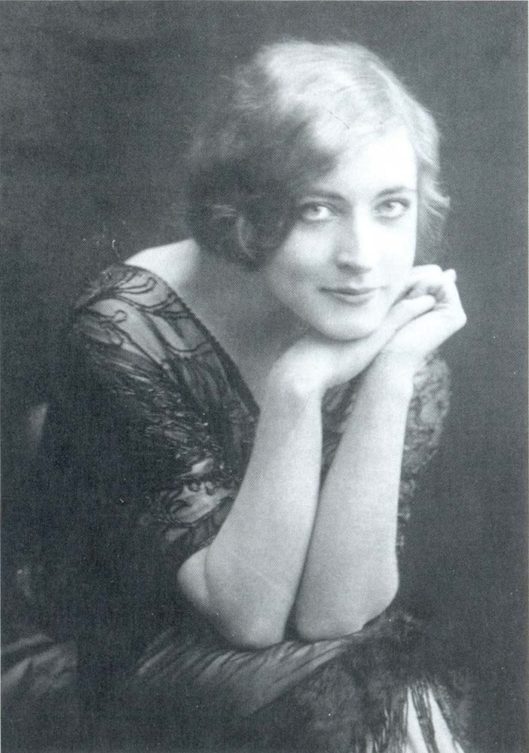
source: www.verbinina.wordpress.com
The fact is that Gütschow's Russian fascination and contacts meant that his collection included Tsarist valuables bought from the Bolsheviks at the sales organized after the Red Revolution. Probably in this way he came into possession of numerous Russian valuables, works of art, golden Faberge eggs, and even coronation insignia of Russian tsars (!!!).
Of course, the collection was much wider and included works of art, weapons, furniture, paintings of various origins ...
Ernst Gütschow created a huge library in the castle, containing about 25 volumes, which became the fourth largest private German collection of historic prints and books.
The Czocha Castle was supposed to be a place where Gütschow wanted to exhibit and store his treasures. It was to be his home and temple for his collector's passion, and at the same time a safe place for valuable collections. No wonder that the reconstruction was largely subordinated to such organization of the interior of the castle as to enable the appropriate display of the collected works, and at the same time the possibility of their safe storage, away from unauthorized eyes and hands. In this light, the systems of corridors, fancy hiding places, blind rooms, isolated vaults and misleading passages cease to be so surprising.
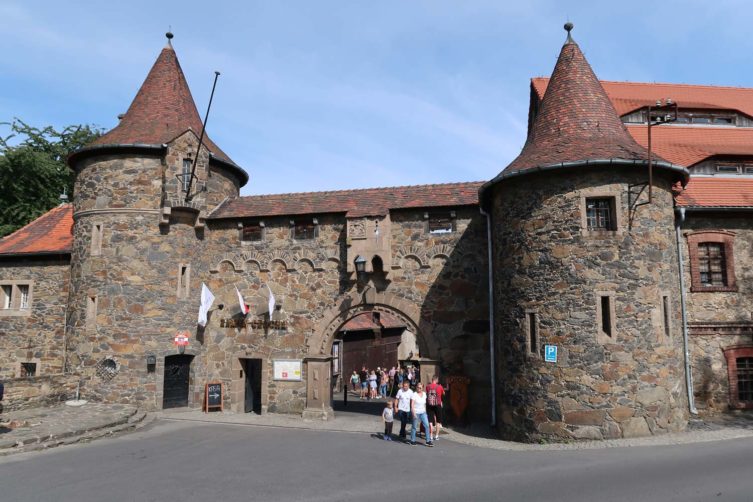
The treasures of Czocha
This is a good time to return to the words from January 1945:
"Give them everything they want to take, and they will still take only a fraction of the treasures of the Czocha castle"
Don't these words sound even more interesting now?
It immediately occurred to me that Gütschow, not being able to take everything with him, consciously decided to leave some treasures for future robbers "as a pillow", hiding the rest in safe places, known only to him, in which the castle abounded. After all, he could not have known that he would never return to Czocha, nor was he able to predict that the German border would move so far after the war that Czocha would be in Poland!
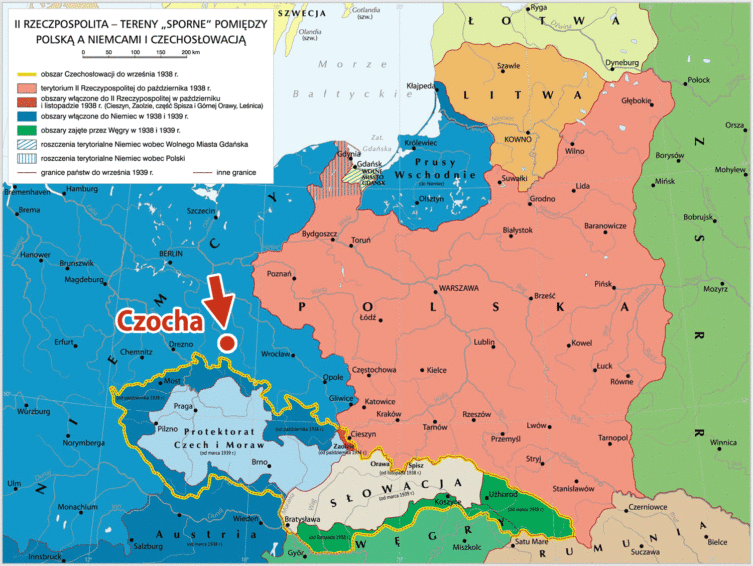
As you can see, the border with Poland was very far back then
source: www.epodreczniki.pl under the CC BY 3.0 license.
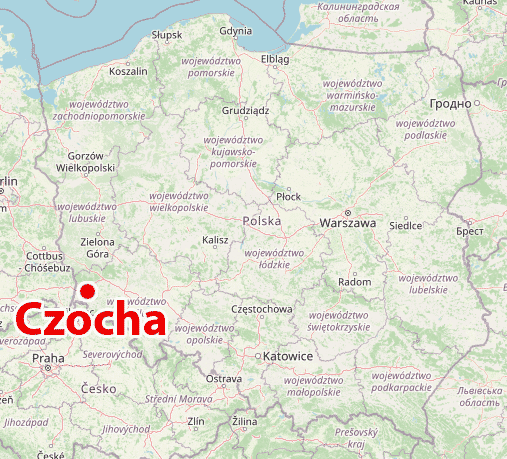
How many treasures were found?
Almost 25 books were recovered in their entirety (they went to the University Library in Wrocław), furniture (53 items), oil paintings (84 items), sculptures (29 items), firearms and white weapons (130 items), some glass and porcelain. A lot, but is there anything else? Very likely! Why?
Discovering the secrets of Czocha Castle
Czocha still keeps his secrets, and discovering them has never been and is not easy. In fact, we are still at the beginning of the road. After all, it can be said that for 44 years Czocha did not exist at all. When a few years after the war, in 1952, the castle was taken over by the Ministry of Defense, the castle disappeared from tourist maps. It officially ceased to exist. It appeared on the maps only in 1996, when it was made available for tourist traffic under the supervision of the Military Housing Agency.
year 1994
Plans for the reconstruction of the castle led by Bodo Ebhardt have been found. A total of 12 plans were found (the largest in A0 format). They show the horizontal projections of the storeys, the purpose of the rooms, the plan of the outer bailey, the castellany, the layout of the facade from the entrance side, and even the arrangement of furniture in the living room. It might seem that there are no more secrets in this situation, but nothing is obvious in Czocha Castle.
Z forty we have only known secret passages to this day thirteen.
The plans show that the usable area of the castle is approx 8000 m2, of which we have only known to this day 3600 m2. More than twice as much is yet to be discovered. So, is there any doubt that there are still many undiscovered secrets waiting in the castle?
year 2016
Medieval stairs connecting the winery with the armory have been discovered and everything would be nice if not for the fact that the actual course of the corridor does not coincide with the one marked on the plans, and the winery was most likely never a winery. Once again it has been confirmed that nothing is obvious here.
2019 and the next 2 years
There was no exploration work, just a simple roof renovation. During the renovation in the attic, during the disassembly of the chimney, a hiding place with an area of one meter by two meters was accidentally found. It contained pre-war books, family albums, a collection of stamps, and a letter from Ernst Gütschow's (Józefina Gütschow) wife sent from Dresden to one of the castle's servants. The letter quickly became a sensation. In a letter to prepare for an important meeting in Dresden, Józefina Gütschow asks, inter alia, about sending her jewelry, indicating precisely where the hiding places in which the jewelry was hidden are located.
You can listen to the full text of the letter in the following video:
In the hiding place discovered in the attic, among books, albums, stamps and letters, there was also ... a V2 rocket propulsion element. And this is probably a good time to mention another, even more interesting story and mystery of Czocha.
Swordfish and Pers Z
History proves that one of the most powerful weapons that had a key impact on the course of World War II was ... information.
Information had to be safe even if it fell into the wrong hands. I will say more, the way of sending information, e.g. by radio, made it known in advance that the information sent would 100% fall into enemy hands. After all, the radio signal could be picked up by anyone, and the monitoring was conducted all the time.
Therefore, the key to the safe transmission of information has become its encryption in such a way that no one other than a specific recipient would be able to decode it. So it is not surprising that the greatest development of this field of knowledge in the history of cryptology took place during World War II.
The Germans had an advanced encryption machine named "EnigmaAlmost everyone knows today. With its help, they encrypted the information sent, and the Russians, Poles, British, Americans ... in general, anti-Nazi forces tried to decode it. The encryption was so advanced that, in theory, breaking the code seemed impossible. Ultimately, we know that thanks to the work of Polish cryptologists, it was possible to crack the Enigma.
Of course, not only the Germans encrypted their information. Advanced encryption methods were used by all armies. So the Germans had their own team, whose task was to break the codes of the Russians and the Allies. The elite team of cryptologists was called "Persian Z". German cryptologists have developed a machine-computer to decrypt Russian messages. It was given the name "Sword fish".
The Russians - like the Germans - used one-time encryption codes, but their encryption technology was far more advanced than Enigma. They were deeply convinced that it was impossible to break their code. Breaking the Russian cipher was therefore a powerful achievement for German cryptologists.
Apart from the Germans, the Allies would also be very happy to use such a machine that decrypts Russian messages. The British and Americans were particularly active in this field. They knew about the existence of such a machine and together they took steps to locate and acquire German cryptology technology.
The idea was simple: several independent teams (six to be exact) were formed under a common name TICOM. They were to enter Germany with the first line of Allied forces and intercept documents, technology and people from German intelligence organizations before they were destroyed, taken away by the Germans or taken over by the Russians.
For taking over documents and people from the crypto group Persian Z was responsible Team 3 TICOM.
Until 1944 Persian Z stationed in Berlin. Then in the summer of 1944, fearing Allied air strikes on Hitler's orders, a team of cryptologists Persian Z together with the decryption machine it was moved from Berlin to Jelenia Góra… and here we start to approach Czocha.
Let's go back to February 1945, right after Ernst Gütschow decided to leave the castle. At the same time, the Soviet army was approaching Jelenia Góra and Persian Z had to be moved again.
For several months now, the Czocha castle has been a permanent home for a detachment of the Abwer, i.e. German military intelligence. The castle, with its hiding places, secret passages, vaults, safes and vaults, was a perfect, and most importantly prepared by Abwera, place to quickly and safely place a secret team of cryptologists there. Team Persian Z was divided into groups. One of them most likely went to the Czocha Castle, and the other two to the Zschepplin Castle near Eilenburg and to Naumburg near Weimar.
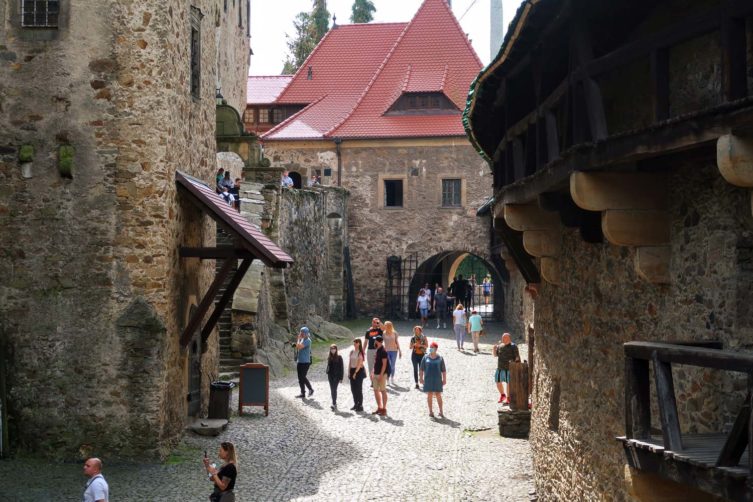
Team 3 TICOM responsible for the acquisition Persian Z he knew about the existence of a castle in the south of Germany, where cryptologists and documentation reside. Everything indicates that it was Czocha. The Americans got to the castle, took over and took away documents and cryptologists. Two days later, the area was taken over by the Russian army.
Unfortunately, there was no decryption machine in the castle, but most likely thanks to the seizure of documents and German cryptologists, the Americans managed to extract information where they were brought "The sword fish". Not much later, the TICOM team traveled to the Bavarian Rosenheim to find a decryption machine, resting in 53 boxes. The British made a copy of the machine for themselves, and the Americans took the original and installed it in a secret spy facility at Vint Hill Farms Station.
Just as a curiosity I will add that "Sword fish”Turned out to be invaluable long after the war. The Russians, believing that the encryption used by them is completely secure, used it for a long time. From the Russian correspondence decoded in this way, the Americans learned, inter alia, that many of Los Alamos scientists and technicians working on the construction of the atomic bomb were telling the Russians (for money or for ideological reasons) the most guarded secrets.
The very fact of the machine's existence was kept strictly secret by the Americans. She couldn't even be mentioned. In 1992, thanks to the director of the American intelligence agency (NSA), the obligation to maintain strict secrecy concerning the "Fish of the Sword" was extended.
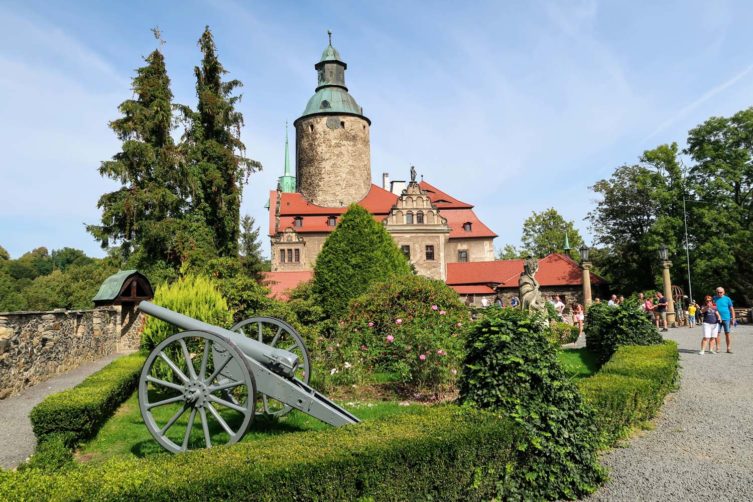
… And Ernst Gütschow?
By a strange coincidence, the figure of Ernst Gütschow somehow connects with the cryptological thread of the castle (the first mention of this topic appeared in the book Janusz Skowroński "Pearls of the Kwisa" - [click]). The conducted research and searches revealed that Gütschow was very much interested in and supported scientific research on computing machines. He even launched a small "LAMOLA" counting machine factory in Berlin. The attempt to patent the solution used in the machine was blocked by the German military authorities, and the solution itself was used in the construction works ... Enigma.
However, Ernst Gütschow's activity in the area of calculating machines does not end there. We found out about it in July 2015. It was then that a certain niche organization (Internationales Forum Historische Bürowelt, which in free translation means the International Forum for the Historical World of the Office), dealing with research and documentation of the history of office technology, published number 100 of your newsletter - [click], which is dedicated to office calculating machines. There, on the occasion of the presentation of counting machines known once all over the world TIM (short for Tim Is Money, meaning time is money) and UNITS, the character of Ernst Gütschow reappears. He was the managing director and shareholder of the Ludwig Spitz & Co. GmbH in Berlin, producing both machines. Further reading of the text also shows that Gütschow also launched a TIM ADD adding machine factory in Gdańsk under the name Gutschow & Co.
So we have a complete set. Ernst Gütschow, cryptologists, German military intelligence, lockers, passages, safes, vaults, secret projects and secrets unexplained to this day united by one name: Czocha.
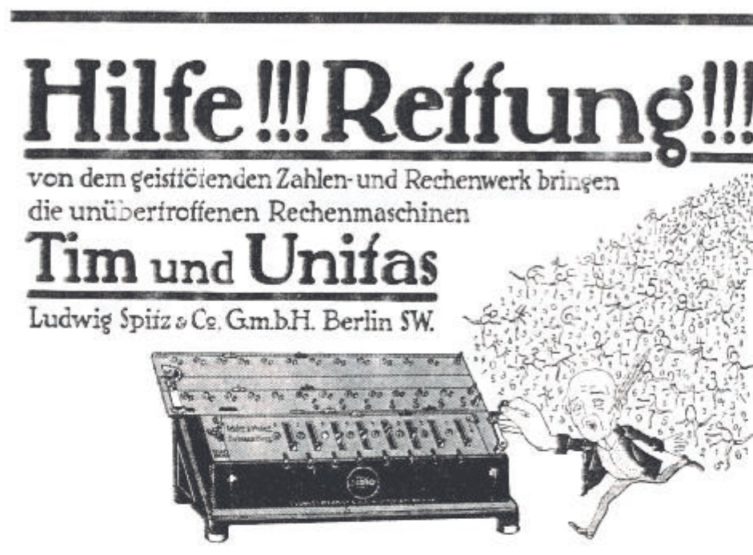
source: www.ifhb.de
What's next with this Czocha?
Well, privately, I think that we will have to wait a long time to explain the secrets of Czocha (which undoubtedly countless number of the castle still hides). Why? For the same reason that we still know so little of them until today. Let me remind you that out of 40 probably existing (visible in the plans of the castle), 13 hidden rooms and passages have been discovered so far. Of the 8000 square meters of space covered by Bodo Ebhardt's redevelopment plans, only 2 square meters are in use today. Over 3600 m2 is still waiting to be discovered.
In this situation, it is natural to want to know the rest, but observing everything from the side, you can see that there is no such desire or is effectively blocked. Let me remind you that the castle is still under the care of the Ministry of Defense.
If I hear for years that work related to the discovery of so far undiscovered parts of the castle cannot be carried out, because there is no consent of the conservator of monuments yet, then I think this is how it should be. Because what is the problem for the maintenance technician to make recommendations and carry out such work in accordance with the recommendations?
Every now and then we hear about a new cover at Czocha Castle, but how many of these discoveries were made as a result of deliberate exploration, and how many were accidental during ordinary maintenance and repair works? Answer yourselves.
So we are still waiting for a long, slow and long adventure in discovering the secrets of Czocha ... which worries me a bit and makes me a little happy.
For now, a book can help with further exploring the secrets of the castle Janusz Skowroński "Secrets of Czocha Castle" - [click]
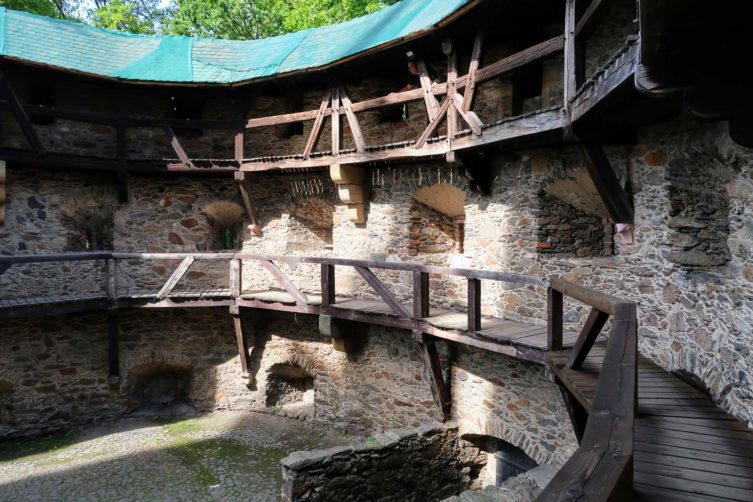
Czocha - sightseeing
It is worth visiting Czocha Castle outside the summer season. The castle is so popular that it is visited by real crowds in the summer. In the off-season it suddenly gets empty and nice.
The building dates back to the XNUMXth century and was built as a typical defensive stronghold. It is undoubtedly beautiful, fantastically situated and impressive. The interiors of the castle are quite austere, and be prepared not to see overpowering, ornately decorated rooms here. After the war, the castle was robbed many times (mainly by local thieves and the Russian army) and later it was not ruined only because it was under the supervision of the Polish army. The army - as you can guess - did not restore it to its former glory, hence the austerity of the interior observed today.
Currently, the castle serves as a hotel and a large part of its area is therefore unavailable to the public.
Hotel guests staying at the Czocha Castle enjoy special favors and can sometimes count on access to normally inaccessible places. You can stay in the castle book here - [click]
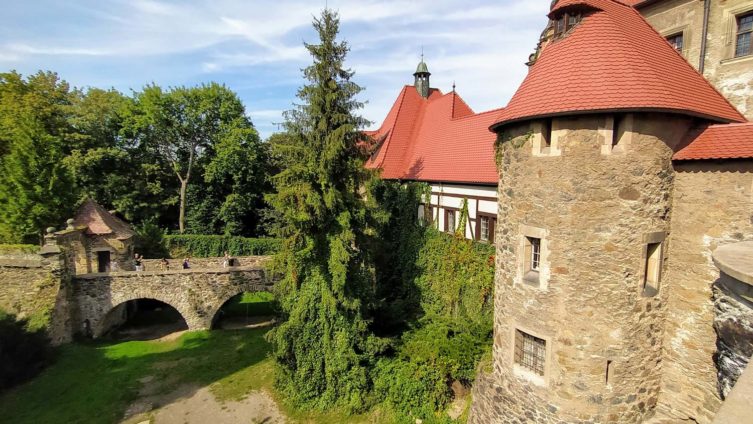
Opening hours
The castle is open every day all year round:
between 10.00 a.m. and 18.00 p.m.
between 10.00 a.m. and 20.00 p.m. (July - August)
Visiting the castle also takes place at night on dates provided directly on the castle page - [click]
Ticket prices
Admission ticket:
Normal (courtyards and interiors with a guide) - PLN 22
Reduced (courtyards and interiors with a guide) - PLN 16
Normal (courtyards without a guide) - PLN 8
Reduced (courtyards without a guide) - PLN 6
Night tour - PLN 50
Booking hotel rooms on Czocha Castle - [click]
Coordinates for navigation
Czocha Castle, GPS coordinates:
51°01’49.7″N 15°18’13.0″E
51.030482, 15.303602 - click and route
Parking P1 at the Czocha castle (free), GPS coordinates:
51°01’44.1″N 15°18’08.6″E
51.028904, 15.302375 - click and route
Parking P2 (paid), GPS coordinates:
51°01’43.3″N 15°18’16.1″E
51.028703, 15.304463 - click and route
Other attractions of Lower Silesia
You can combine visiting Czocha Castle with visiting other castles, of which there are many in Lower Silesia. I have prepared a special one map of castles and palaces of Lower Silesia - [click] along with short descriptions and photos. See and plan a stunning trip!
Important to me!
Give the article a good rating (5 stars welcome 😀)!It's free, a for me it is very important! The blog lives on visits and thus has a chance to develop. Please do it and ... thank you in advance!
If you like my guides, you will certainly find the one I created useful guide catalog - [click]. There you will find ready-made ideas for your next trips, descriptions of other tourist destinations and an alphabetical list of guides divided into countries, cities, islands and geographical regions.
I also post link to Facebook profile - [click]. Come in and press "Follow"then you will not miss new, inspiring posts.
Unless you prefer Instagram. I'm not a social media demon, but you can always count on something nice to look at on my instagram profile - [click]. The profile has just been created, so for now he is starving, due to the lack of followers. He is happy to receive any observer who feeds him with his love.
I make the content I create available free of charge with copyright, and the blog survives from advertising and affiliate cooperation. So, automatic ads will be displayed in the content of the articles, and some links are affiliate links. This has no effect on the final price of the service or product, but I may earn a commission for displaying ads or following certain links. I only recommend services and products that I find good and helpful. Since the beginning of the blog's existence, I have not published any sponsored article.
Some of the readers who found the information here very helpful, sometimes ask me how you can support the blog? I do not run fundraisers or support programs (type: patronite, zrzutka or "buy coffee"). The best way is to use links. It costs you nothing, and support for the blog is self-generating.
Pozdrawiam

I often read about the castle, but I haven't traveled personally yet. Maybe it will work this year and preferably with an overnight stay. We'll see, and in the meantime, thank you for the extensive post.
How did the castle pass into the hands of the Polish Naval Academy?
It was owned by a German who left - like many other Germans, for example from Kashubia. Now some have their properties back there.
How did it happen that none of the heirs regained the castle?
Second question.
Is there any fenced military area in the vicinity of the castle?
In the 70s, working in the part-polit apparatus in one of the hunting regiments near Koszalin, I remember hearing that there was a holiday resort in Czocha Castle used by our pilots. But it's been so long, almost 50 years, so I could be wrong.